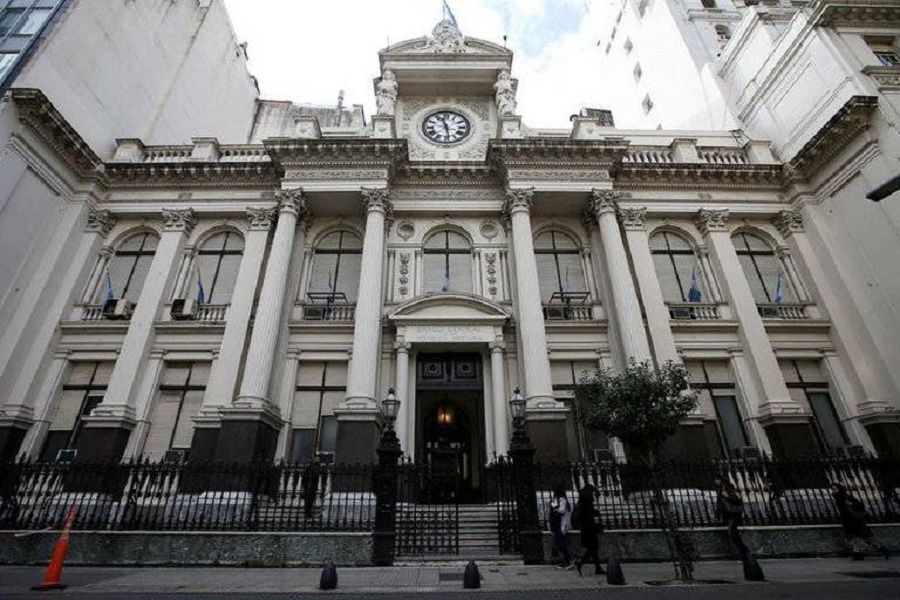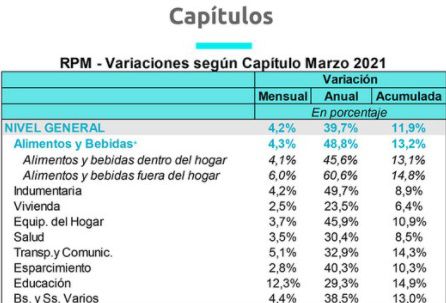The official result, to be announced next week, outperforms the highly relevant group of countries in the region; Analysts expect a minimum of 3.5% on average for the next few months.
Argentina Re-registration in the second March Economic inflation higher than Latin america, At a monthly rate that surpassed the group of most important countries in the region.
When the National Institute of Statistics and Census (Indec) on Thursday confirmed the discrepancy in average consumer prices from last month, inflation will have exceeded 11% in the first three months of the year. Special Advisers estimate that it finished at around 4%, although the final number may rise, with a similar trend in April.
Only 4% has been surpassed by the 9.1% recorded in Venezuela, according to the Financial Monitor of the country, which is in a chronic hyperinflationary state. In the past 12 months, it has reached 3,687% according to the IVF and International Monetary Fund (IMF) projects, which will end at 5,500% by the end of the year.
Brazil posted a rate of 1.04% last month and 6.2% in the past 12 months. Analysts participating in the Latinfocus project see it will end up with a 4% rate hike. In Mexico, the figure was 0.8% in March and 4.6% last year, while it is expected to be 3.7% at the end of the year.
In Uruguay, it increased to 0.6% in March and 3.1% in 12 months. It is estimated that it will end the year at 7.3%; For Peru, it was 0.7% in March and 2.6% in 12 months; It will end at 2% in December, while in the case of Paraguay these numbers were a slight contraction of -0.1%, 2.04% and 3% respectively.
In the case of Ecuador, last month’s record reached 0.18%, with a contraction of 0.8% in 12 months, and this year it was forecast at 0.9%; In Bolivia, the numbers were: -0.1%, 1.1% and 2.2%, respectively.
Meanwhile, in Chile it reached 0.4% in March, 2.9% in one year, and will end at 3.1% this year, while previous data in Colombia were 0.5% and 1.5% in 12 months. It is estimated that it will rise to 2.7% in December.
With these numbers, Argentina will end another year in comfortable second place after Venezuela in the region and a place in the top ten, as in recent years.
Signs for April
According to the Eco Go study conducted by Marina Dal Pugito, “So far this year, price dynamics have been decoupled from the rate of devaluation; while prices rose 11.9% in the year, the exchange rate moved 10.2% and slowed at the margin (2.3% in March). , Which represents a clear path to the appreciation of the real exchange rate. “
“So far this year, price dynamics have been decoupled from the rate of devaluation.” (Dal Poggetto)
“Far from the tariff’s fulcrum and the pressure decision to curb the pace of the creeping peg, prices remain long due to the clearance of the exchange rate gap and the effect of import restrictions, mainly because of the permitted increases in the regulated items. The first months of the year. “
The program, which has gone into effect since last March, has introduced two price adjustments since then: both between 4% and 9%, one in July and last October. The impact on the index of price liberalization of frozen products is undeniable, the report said, but keeping it frozen is not sustainable in a context of increasing cost dynamics.
The consulting firm’s analysis adds: “At the moment, easing inflation increases inflation in the future. Despite the controls, food inflation remains high, driven by uncontrolled foods (fresh produce), meats, fruits and vegetables, as well as products that have been written off. From Maximum Prices.
Eco Go estimated headline inflation at 4.2% last month, 11.9% since January and 39.7% in 12 months. The food and beverage category was 4.3 in March and 48.8% last year, according to this measure.
In the first week of April, according to Eco Go, the food and beverage rally was 2.1%, with “margin accelerating 1.5% and increasing 4.2% compared to the first week in March”. The report warned that “in the short term, prices remain long while the central bank aims to slow the rate of devaluation to 1.5% per month, at the same time that the expected monthly inflation falls in the region of 3.5%. To 4%.”
Eco Go highlighted that “managed increases in regulated items are putting upward pressure on prices, delaying a slowdown in the nominal economy and complicating price targets for the coming months.”
LCG Director Guido Lorenzo said his price survey ended in March above 4% and that in April it indicated 3.5% “a floor that appears difficult to dig” for the coming months.
In the case of food prices, LCG posted a 1.3% increase in the first week of this month. The Food and Beverage Index provided an average monthly inflation of 4.6% in the past four weeks and 5% as measured from start to finish in the same weeks. LCG reports that these price levels leave a handicap of 3.6% for the remainder of April.
For these reasons, inflation in Camilo Tiscornia will end this year at 44.5%, although other consultants believe it will reach 46%, far from the official guideline of 29% that the Economy Ministry set out in this year’s budget. infobae.

“Unapologetic pop culture trailblazer. Freelance troublemaker. Food guru. Alcohol fanatic. Gamer. Explorer. Thinker.”






